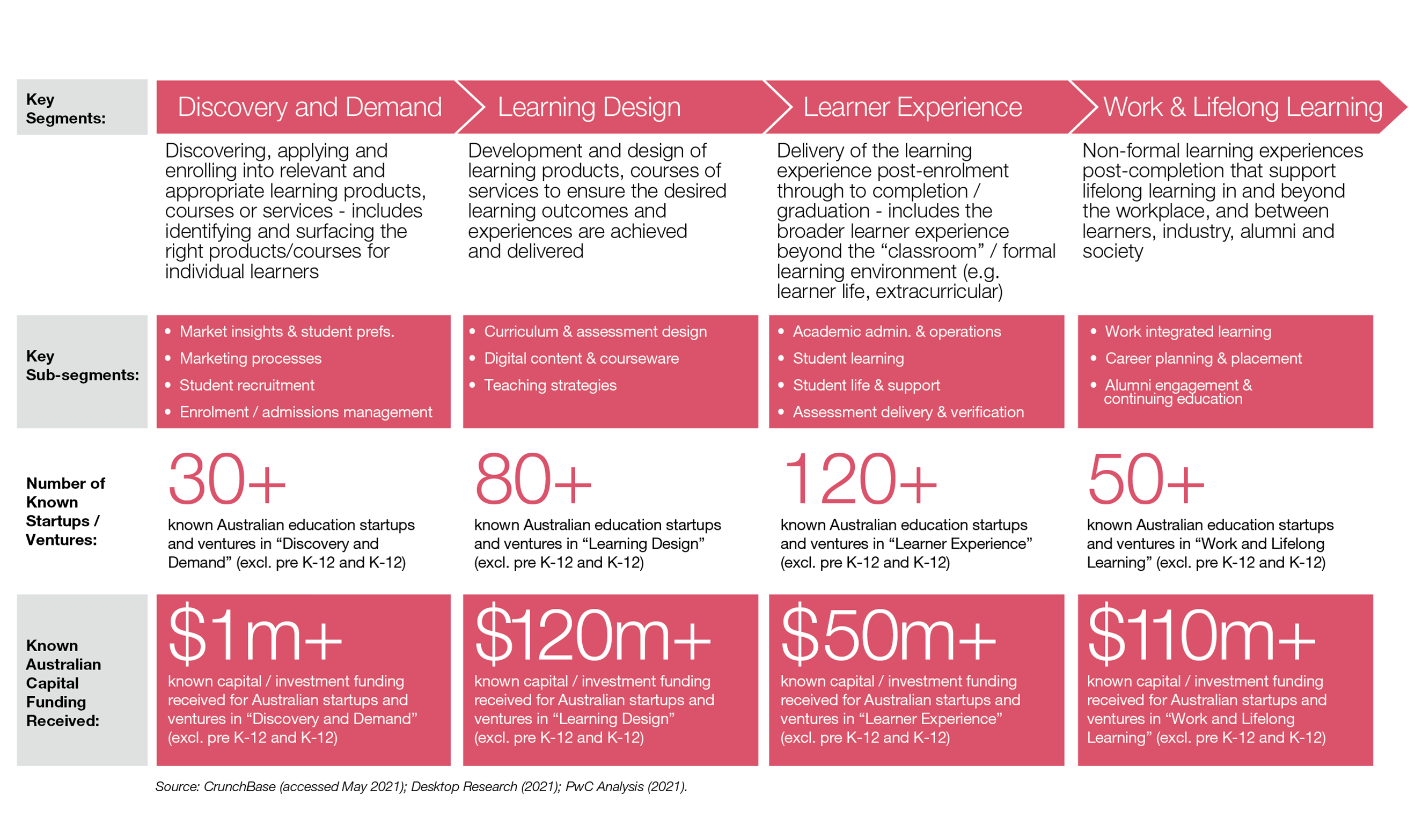The COVID-19 pandemic has accelerated digital disruption throughout society and the economy, including education. While the pace of change in education might not be as rapid as in some other industries (most notably the FinTech sector), digital transformation has been inevitable for educational institutions forced to adapt in order to remain operational during the pandemic.
Education technology (EdTech) has enabled this rapid digital shift by enabling improvement or transformation of education delivery and practices. Globally, the EdTech sector has reached critical mass, now estimated to be worth over US$250 billion. EdTech ventures, capabilities and offerings are increasingly mainstream.
EdTech companies are also encroaching on traditional educational powerhouses, including global universities, competing for the same learners by providing alternative learning experiences and pathways.
How should educational institutions respond?
A thriving Australian EdTech sector
In Australia, the domestic EdTech start-up sector is the nation’s second-largest start-up community, behind FinTech, more than doubling in size since 2017. Growth in start-up activity is expected to continue as EdTech plays a pivotal role in revolutionising education by challenging existing education models.
The post-K–12 education levels, including higher, vocational and corporate education, and non-accredited lifelong learning, account for over half of Australian EdTech start-ups (see Figure 1). These start-ups are already active in fully online education delivery, digitally enabled assessment delivery and virtual work-integrated learning experiences.
More recently, there has been increasing focus on digitally enabled student engagement models across the education value chain. It is estimated that half the organisations in the EdTech start-up landscape are either subscale or early stage, indicating significant innovation and disruption still to be realised.
Figure 1: Australian post-K–12 education value chain
As more EdTech start-ups look to disrupt the post-K–12 education sector, these institutions have a choice: fight them off and build competing digital capabilities and offerings, or find new ways to partner with EdTechs.
Partnering with EdTech
Increasingly, institutions acknowledge the value EdTech start-ups can offer and opt to collaborate.
They should consider the uncertainty caused by COVID-19 changed user preferences and expectations. As institutions (and particularly universities) look to rebound from the pandemic, they should ask themselves three questions:
- What is our purpose and differentiated proposition?
- How does our purpose determine our future activities and our size and shape?
- How will we develop the enablers for success in the new normal?
And an institution’s overarching strategic vision and priorities should drive EdTech engagement. Generally, this will relate to one of four strategic motives:
- Enhance market penetration with EdTech capabilities and offerings
- Product development
- Market development by addressing capability gaps through partnerships with EdTech ventures
- Diversification by spinning out internal capabilities or partnering with emerging ventures
Once this is established, institutions can assess the EdTech ecosystem for opportunities to embed and integrate EdTech capabilities into their core educational offering.
Understanding the most appropriate engagement model is equally important to recognising how the EdTech opportunity will support an institution’s strategic vision. Generally, institutions engage with EdTech ventures in three ways:
- commercial service agreements where EdTech ventures are contracted to develop or deliver an established set of products or services in exchange for an agreed fee. This can be a simple licence fee based on the number of users or learners, or a more complex revenue-share arrangement for long-term partnerships
- co-development partnership where institutions and EdTech start-ups partner from early in the innovation process to co-develop a concept, test and validate it with the market, and launch a product or solution that does not exist in the marketplace
- full acquisition of the EdTech ventures to gain complete ownership and control of the product or service offering, and their associated capabilities and intellectual property. Institutions will often integrate these capabilities into their own organisation or maintain them as a separate commercial entity that also serves other institutions.
The EdTech horizon
If Australian institutions can collaborate to bridge the gap between the traditional education sector and the EdTech ecosystem, this could drive an education revolution that will:
- improve student outcomes with more effective learning approaches and pedagogy
- enhance the Australian workforce’s skills with more improved learning products
- increase equity and access to education, regardless of postcode, nationality or socioeconomic status.
These benefits stand to improve life trajectories for all Australians, for generations to come. What is at stake here is not just better educational institutions – it is a stronger economy and enriched society for us all.
To learn more about how EdTech is revolutionising the higher education sector, see PwC’s latest viewpoint Redefining the role of EdTech: a threat to our education institutions, or a strategic catalyst for growth?











